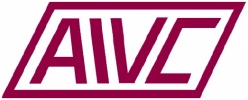The 40th AIVC conference: “From Energy crisis to sustainable indoor climate – 40 years of AIVC" was held on 15 & 16 October 2019 in Ghent together with the 8th TightVent conference and the 6th venticool conference. There were 204 participants from 28 countries.
The conference consisted of 3 parallel sessions largely devoted to:
- Smart ventilation, Indoor Air Quality (IAQ) and health
- Building and ductwork airtightness
- Ventilative cooling – Resilient cooling
The conference consisted of a mixture of presentations from the call for papers and presentations upon invitation, organized in well prepared and structured sessions focused on the conference theme and topics. Some sessions consisted of presentations from the call for papers only, other sessions were topical sessions with presentations proposed by a session organizer and by the organizing committee. The conference was combined with an exhibition by industry partners.
The conference was an initiative from INIVE on behalf of the AIVC, TightVent Europe and venticool in collaboration with Ghent University.
The detailed programme is available here.
The summaries of the 3 tracks can be found here:
- Airtightness track summary
- Smart Ventilation, IAQ & Health track summary
- Ventilative Cooling & HVAC track summary
The full set of proceedings can be found here.
The evaluation of the conference by the participants can be found here.
A list of recorded presentations focusing on the topic of airtightness follow (relevant links provided below):
- Airtightness and energy impact of air infiltration in residential buildings in Spain (Irene Poza-Casado, Universidad de Valladolid, Spain) |
Slides, Recordings
- Assessment of long-term and mid-term building airtightness durability: field study of 61 French low energy single-family dwellings (Bassam Moujalled, CEREMA, France) | Slides, Recordings
- New findings on airtightness measurements of very airtight buildings and apartments (Stefanie Rolfsmeier, BlowerDoor GmbH, Germany) | Slides, Recordings
- Deviation of blower-door fans over years through the analysis of fan calibration certificates (Valérie Leprince, INIVE, France) | Slides, Recordings





